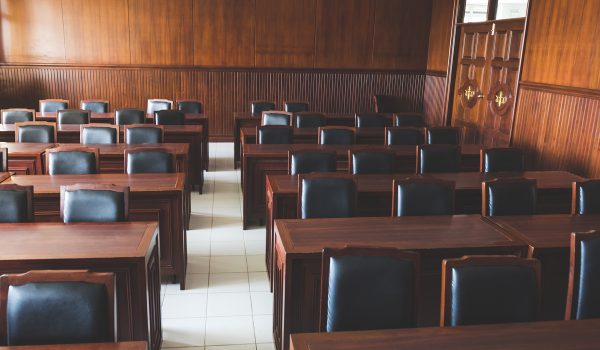The American bankruptcy process is geared towards providing (a) financially distressed businesses and individuals with a “fresh start” and (b) their creditors a fair opportunity to address their claims. Much of that process takes place in bankruptcy courts all over the country on a daily basis. So, what effect does a pandemic, such as the novel coronavirus (and its attendant disease, COVID-19), have on the administration of bankruptcy cases in the U.S.? Of course, the federal, state and local restrictions on public gatherings create a challenge for U.S. bankruptcy courts and bankruptcy filers and their creditors, but the courts are taking steps to minimize that impact and ensure that parties will be able to obtain the relief they need, while also addressing the public health concerns presented by this crisis.
One thing that the bankruptcy courts have done on a global basis has been to restrict in-person access to the courts by individuals who have been diagnosed with, or have had contact with anyone who has been diagnosed with, COVID-19. For instance, the Bankruptcy Court for the Southern District of Ohio entered such an order, which also restricted access to anyone who has traveled within the last 14 days to Italy, Iran, South Korea or China. Other courts are restricting access to persons who have traveled anywhere in Western Europe. These courts have set up procedures for continuing matters wherein an attorney or key witness is restricted from accessing the courts.
Another change that a number of bankruptcy courts have made is to facilitate telephonic participation in hearings. In the Bankruptcy Court for the Northern District of Texas, where prior permission is generally required in order to participate in hearings telephonically, all bankruptcy courts in the district updated their telephonic appearance policies to limit the necessity of obtaining prior permission. The Bankruptcy Court for the Eastern District of Kentucky has enacted a similar change in policy. And on March 24, the Bankruptcy Court for the Southern District of Texas entered an order adopting hearing protocols that, among other things, require video participation in hearings, including by witnesses (and, thus, the extraordinary prospect of questioning witnesses by video).
Some bankruptcy courts recently have also entered orders imposing a blanket continuance of all matters for a certain period of time. The Bankruptcy Court for the Northern District of Texas, for example, has continued most hearings through May 1, 2020. And the Bankruptcy Court for the Eastern District of Texas in Plano has closed entirely until April 2, 2020, as a result of a March 18, 2020 visitor to the courthouse being presumptively diagnosed with COVID-19.
With all of these restrictions, the bankruptcy courts are going to be mindful of the need for certain matters to be heard on a priority basis. In the Northern District of Texas, the bankruptcy court’s order continuing most matters stated it “understands that requests for emergency consideration of certain first-day matters in new chapter 11 cases may need to be heard during this time period and will endeavor to make accommodations on a case-by-case basis to allow those hearings to proceed and to limit those parties who are required to appear in person at such hearings.”
In short, in this very fluid situation, U.S. bankruptcy courts are taking steps to protect the health of Americans while also providing as much access as possible to parties seeking relief from those courts, despite increasingly challenging circumstances. Given the financial impact of this health crisis, that message of balancing the nation’s urgent health concerns with crucial access to our bankruptcy system is an important message indeed.

